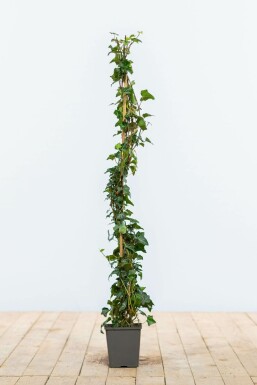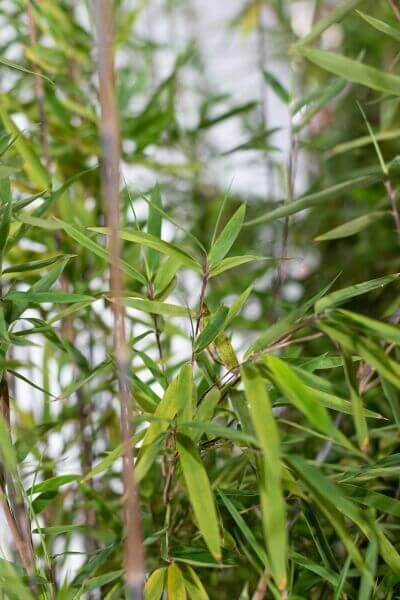Best Hedge Plants For Busy Roads
Best Hedge Plants For Busy Roads
Blog Article
Hedge Plants For Heat Tolerance
Boost your garden's attraction with lavish hedge ranges such as Yew (Taxus), Thuja, Laurel, Photinia, and Bamboo, commemorated for their structural stability and environmental advantages.
Yew and Thuja offer evergreen protection and winter resilience, while Laurel provides quick growth and broad, aromatic leaves.
Photinia adds seasonal appeal with its lively red foliage, and Bamboo lends a low-maintenance, serene ambiance.
These hedges enhance air quality, decrease sound, and create tranquil, private areas.
Proper planting, spacing, and upkeep make sure vigorous growth and eco-friendly harmony.
Explore how these rich ranges can raise your garden's beauty and well-being.
Key Takeaways
Change Your Garden With Lush Hedge Ranges
- Select Yew for its thick, evergreen growth and unrivaled durability.
- Go with Laurel for its fast growth and broad leaves, making sure quick privacy.
- Select Photinia for its dynamic seasonal foliage, which turns a striking dark red.
- Make use of Bamboo for a low-maintenance, winter-hardy hedge with visual appeal.
- Area plants 2-3 per meter and prune regularly for ideal growth and health.
Popular Hedge Plants
When transforming a garden with rich hedge ranges, it's necessary to think about popular hedge plants such as Yew, Thuja, Laurel, and Photinia due to their special attributes and advantages.
Yew (Taxus) is extremely respected for its durability and thick, green development, making it a prime choice for withstanding landscapes.
Thuja is noted for its evergreen foliage and robust winter resilience.
Photinia adds seasonal vibrancy with red leaves that darken over time, creating vibrant visual appeal.
Laurel uses fast growth and fragrant, broad leaves, ideal for fast personal privacy.
Furthermore, Bamboo is an outstanding choice for ambiance, using a low-maintenance, winter-hardy alternative that improves the garden's aesthetic with its classy, swaying walking canes.
These selections cater to a range of horticultural requirements and preferences.
Advantages of Garden Hedges
Garden hedges provide a wide range of benefits, making them an important addition to any landscape. These natural barriers are affordable to implement and supply significant wind defense, improving air circulation and adding to noise decrease. The dense foliage of hedges like Thuja and Beech makes sure privacy by blocking visibility, developing a secluded and tranquil environment.
Hedges also play an important role in microclimate policy, supplying a stable environment that cultivates plant development and lessens temperature fluctuations. Their detailed leaf structures filter contaminants, enhancing air quality and contributing to a much healthier garden ecosystem.
Additionally, hedges master sound reduction, soaking up and deflecting sound waves to lower ambient sound levels. This double functionality of supplying both visual and acoustic personal privacy enhances the general tranquility and aesthetic appeal of any garden.
Planting and Upkeep Tips
For a successful hedge, precise preparation of the planting location is crucial. Guarantee the soil has correct pH and drain to support strong root development.
Area the plants properly for the chosen species. Water the hedge often throughout its initial growth phase, changing as required with seasonal modifications.
Implement a methodical bug control and illness avoidance strategy, using organic or chemical treatments when essential. Regularly check for aphids, termites, and fungal infections.
Apply mulch to maintain moisture and suppress weeds. Seasonal pruning promotes thick development and air blood circulation, important for plant health.
Following these guidelines will assist you cultivate a dynamic, well-maintained hedge that enhances the beauty of your garden.
Spacing and Trimming Guidelines
Spacing and Trimming Guidelines
Proper spacing and trimming are essential for cultivating healthy, visually appealing hedges. Sufficient spacing guarantees each plant receives sufficient nutrients, light, and airflow.
Follow these guidelines for optimal hedge maintenance:
- Spacing: Position hedge plants 2-3 plants per meter to motivate robust development.
- Pruning Strategies: Routine pruning is vital for keeping wanted hedge height and shape. Cut brand-new growth in summer and cut down older wood during winter season.
- Seasonal Care: Adjust cutting techniques and schedules according to seasonal requirements to ensure plant health.
- Hedge Height: Regularly display and trim to keep the preferred hedge height and attain uniform aesthetics.
Following these actions will ensure your hedge prospers, enhancing both the appeal and functionality of your garden.
Picking the Right Hedge
Choosing the Right Hedge
Choosing the proper hedge involves examining factors such as fully grown height, foliage density, Additional info and ecological resilience. Successful hedge plant choice requires understanding each species' development qualities and site-specific adaptability.
For example, Yew (Taxus) provides exceptional durability and dense growth, while Thuja is noteworthy for its winter season strength. Additionally, considering upkeep requirements is vital; fast-growing types like Laurel or Privet demand regular trimming, whereas low-maintenance options like Bamboo or Ivy might be more effective for those looking for very little maintenance.
Ecological aspects such as soil type, light availability, and moisture conditions should likewise assist the choice procedure. This mindful approach makes sure the picked hedges will flourish, supplying both practical and visual advantages to the garden landscape.
Shipment and Planting Advice
To guarantee your hedge plants grow, they need to be provided by specialized carriers and planted without delay upon arrival.
Follow these necessary actions for successful planting:
- Soil Preparation: Enrich the soil with raw material to enhance drain and nutrient content.
- Planting Depth: Create a trench two times the width and equal to the depth of the root ball.
- Watering Strategies: Water completely after planting, keeping the soil regularly wet however not saturated.
- Mulching: Use a layer of mulch to keep moisture and reduce weeds.
Client Support and Service
Offered the essential role of prompt assistance in horticultural pursuits, our customer support group is offered 6 days a week through telephone, e-mail, and social media to use professional guidance and promptly attend to any concerns. Their devotion to quick action times ensures consumer complete satisfaction by solving inquiries related to plant health, ideal planting approaches, and maintenance schedules.

6 days a week
Within 48 hours
This detailed support group, reinforced by a stellar 9.3/ 10 client rating, highlights our dedication to improving the gardening experience for every customer.
Often Asked Questions
The Length Of Time Does It Take for Hedge Plants to Develop?
Hedge plants typically need one to three years to end up being fully developed, with the exact period varying by species and growing conditions.
Reliable care during this important period is vital for robust growth. Consistent watering, alert weed control, and appropriate fertilizer application are critical in promoting strong root development.
For example, fast-growing types like Laurel might establish quicker, while slower-growing ranges such as Yew might take longer. Persistent upkeep speeds up the establishment process, leading to thick and healthy hedges.
What Are the Best Hedge Plants for Personal Privacy?
The concern of the very best hedge plants for privacy includes evaluating evergreen and deciduous alternatives.
Evergreen hedges like Thuja, Laurel, and Cypress provide year-round coverage, ensuring constant personal privacy.
On the other hand, deciduous hedges such as Beech provide seasonal privacy, shedding leaves in cooler months.
Secret maintenance tips for personal privacy hedges consist of regular cutting, fertilizing in spring, and correct spacing-- usually 2 to 3 plants per meter.
Furthermore, consistent watering and thorough weed removal are crucial for promoting healthy, dense development.
Can Hedge Plants Draw In Wildlife to My Garden?
Yes, hedge plants can attract wildlife to your garden by providing vital benefits like shelter, food, and nesting websites, therefore boosting local biodiversity. For example, yew, holly, and laurel are outstanding for attracting birds, while ivy supports a variety of bugs.
Nevertheless, it is essential to keep in mind that there are some disadvantages, such as increased upkeep to manage bugs and regular maintenance. Thoroughly selecting and preserving hedge varieties can assist stabilize these advantages and drawbacks, ultimately cultivating a vibrant and sustainable community in your garden.
Exist Any Blooming Hedge Plants Available?
Yes, there are flowering hedge plants offered that can enhance the charm of your garden.
For example, Elaeagnus, likewise understood as Olive Willow, produces fragrant white flowers in the fall, including a touch of sophistication.
Photinia, another popular choice, showcases vibrant red leaves that develop into a rich green, developing a dynamic visual effect throughout the seasons.
To make sure these plants flourish, it's vital to practice proper pruning methods and seasonal upkeep, such as cutting brand-new development in the summer and cutting down in the winter season.
These measures will help preserve the health and aesthetic appeal of your blooming hedges.
How Do I Prevent Insects in My Hedge Plants?
To avoid insects in hedge plants, utilize natural pest control approaches and preserve appropriate hedge care. Introduce useful insects like ladybugs, which take advantage of damaging bugs, to produce a well balanced community.
Routinely check your hedges for indications of infestation and without delay get rid of any afflicted parts to avoid the spread. Make sure the health of your hedges by applying balanced fertilizers and providing appropriate water.
Utilize mulching to keep soil wetness and appropriate spacing to minimize plant tension and promote robust growth. These practices collectively assist in minimizing insect issues and keeping a healthy hedge.
Conclusion
In essence, choosing the best hedge ranges such as Yew, Thuja, and Laurel can transform any garden into a peaceful haven. These plants offer year-round plant, boost aesthetic appeal, and offer practical benefits like noise decrease and wind protection.
Proper planting strategies, precise spacing, consistent watering, and seasonal cutting are vital for optimal growth.
Trustworthy delivery services and skilled customer assistance make sure a seamless experience from purchase to planting, making it easier than ever to raise your outdoor space.
Garden hedges use a wide range of advantages, making them an important addition to any landscape. These natural barriers are cost-effective to execute and offer substantial wind protection, enhancing air flow and contributing to sound decrease. The thick foliage of hedges like Thuja and Beech makes sure personal privacy by blocking visibility, creating a serene and secluded environment.

Pruning Methods: Regular pruning is important for maintaining wanted hedge height and shape. Trim new development in summertime and cut back older wood during winter season.
Report this page